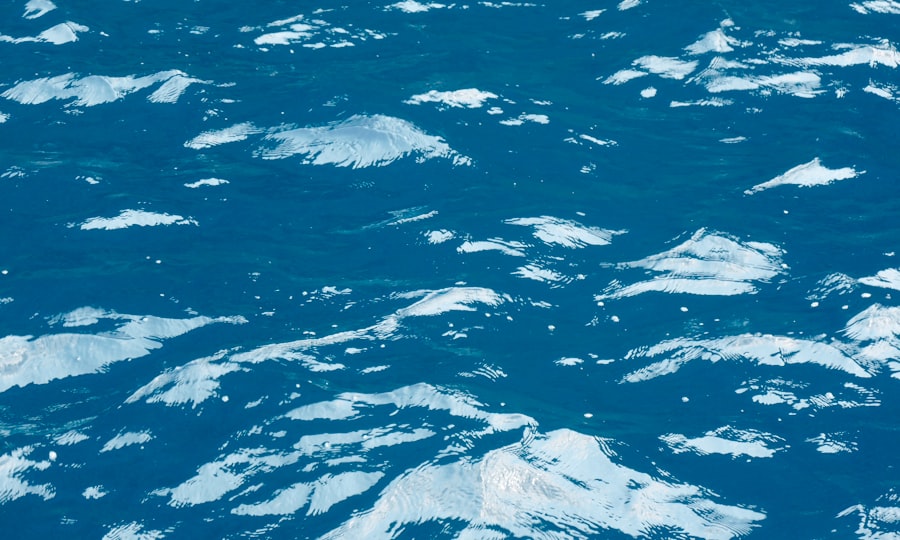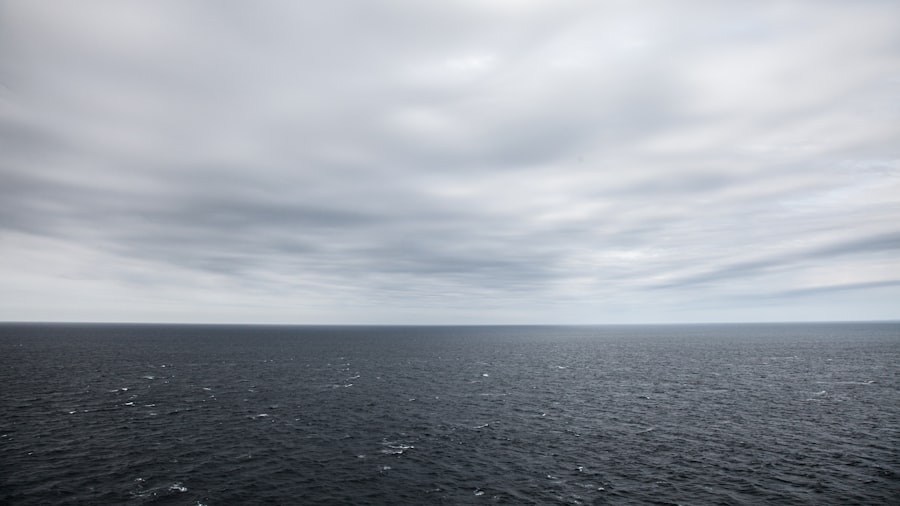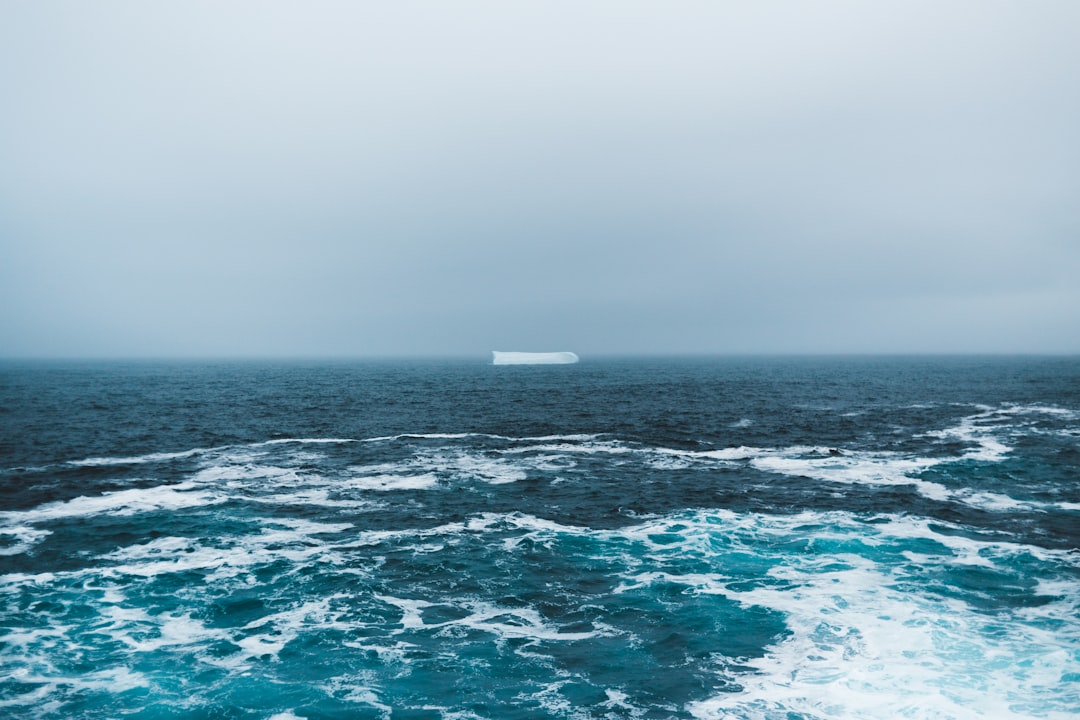The Drake Passage, a body of water situated between the southern tip of South America and Antarctica, is renowned for its tumultuous seas and unpredictable weather patterns. Spanning approximately 800 kilometers, this passage serves as a critical maritime route for vessels traveling to and from the Antarctic region. Named after the English explorer Sir Francis Drake, who navigated these waters in the late 16th century, the Drake Passage has become synonymous with both adventure and peril.
Its unique geographical position makes it a vital area for scientific research, tourism, and commercial shipping, yet it is also infamous for its challenging conditions.
The confluence of the Atlantic and Pacific Oceans creates a dynamic environment where waves can reach staggering heights, and winds can whip up unexpectedly.
This unpredictability has made the passage a focal point for meteorologists and oceanographers alike, as understanding its weather patterns is essential for safe navigation. As more vessels venture into these waters, the need for accurate weather forecasting becomes increasingly critical, underscoring the importance of understanding the complexities of this maritime corridor.
Key Takeaways
- The Drake Passage is a treacherous body of water located between South America’s Cape Horn and the South Shetland Islands of Antarctica.
- Accurate weather forecasting is crucial for safe navigation and successful research in the Drake Passage.
- Understanding the 10-day weather outlook helps researchers and travelers plan and prepare for their journey through the passage.
- Factors such as wind patterns, ocean currents, and air temperature can significantly impact the weather in the Drake Passage.
- Historical weather patterns provide valuable insights for predicting future weather conditions in the Drake Passage.
Importance of Weather Forecast in the Drake Passage
Weather forecasting in the Drake Passage is of paramount importance due to the region’s notorious reputation for severe weather conditions. The passage is characterized by rapidly changing weather patterns that can shift from calm to chaotic within a matter of hours. For those traversing these waters—be it researchers, tourists, or commercial vessels—having access to reliable weather forecasts can mean the difference between a safe journey and a perilous situation.
Accurate forecasts help mariners prepare for potential storms, high winds, and rough seas, allowing them to make informed decisions about their routes and timing. Moreover, the significance of weather forecasting extends beyond mere navigation; it also plays a crucial role in ensuring the safety of crew members and passengers. The Drake Passage is often referred to as one of the most dangerous stretches of water in the world, and understanding its weather dynamics is essential for minimizing risks.
By providing timely updates on changing conditions, meteorologists can help vessels avoid hazardous situations, thereby safeguarding lives and property. In this context, weather forecasts serve not only as navigational aids but also as vital tools for risk management in an inherently unpredictable environment.
Understanding the 10-Day Outlook

The 10-day weather outlook for the Drake Passage offers valuable insights into expected conditions over a significant period. This forecast typically includes information on wind speeds, wave heights, precipitation, and temperature trends. By analyzing this data, mariners can gain a clearer picture of what to expect during their journey, allowing them to plan accordingly.
For instance, if a storm is predicted within the next few days, vessels may choose to delay their departure or alter their course to avoid the worst of the weather. Understanding the 10-day outlook also involves recognizing that forecasts are not set in stone; they are subject to change as new data becomes available. Meteorologists utilize advanced modeling techniques and satellite imagery to refine their predictions continuously.
As such, while a 10-day forecast provides a useful framework for planning, it is essential for those navigating the Drake Passage to remain flexible and prepared for sudden shifts in weather conditions. This adaptability is crucial in a region where calm seas can quickly transform into turbulent waters.
Factors Affecting Weather in the Drake Passage
| Factor | Description |
|---|---|
| Wind | Strong westerly winds are common due to the polar jet stream. |
| Temperature | Temperatures can range from -2°C to 10°C, influenced by ocean currents. |
| Pressure Systems | Low pressure systems can bring stormy conditions, while high pressure systems can bring calmer weather. |
| Icebergs | Icebergs from the Antarctic continent can affect navigation and weather patterns. |
| Ocean Currents | The Antarctic Circumpolar Current and other currents can impact weather and sea conditions. |
Several factors contribute to the unique weather patterns observed in the Drake Passage. One of the most significant influences is the geography of the region itself. The narrowness of the passage funnels ocean currents and winds, creating conditions that can lead to rapid changes in weather.
Additionally, the confluence of warm and cold ocean currents plays a pivotal role in shaping local climate patterns. The Antarctic Circumpolar Current, which flows around Antarctica, interacts with warmer waters from the north, resulting in complex atmospheric dynamics that can lead to storms and high seas. Another critical factor affecting weather in the Drake Passage is seasonal variation.
During the summer months, warmer temperatures can lead to increased evaporation and moisture in the atmosphere, potentially resulting in more intense storms. Conversely, winter months may bring colder temperatures and ice formation, which can also impact navigation and weather patterns. Understanding these seasonal shifts is essential for accurate forecasting and safe travel through this challenging maritime corridor.
Historical Weather Patterns in the Drake Passage
Historical weather patterns in the Drake Passage reveal a long-standing reputation for volatility and unpredictability. Over the years, numerous accounts from sailors and researchers have documented extreme weather events that have occurred in this region. From towering waves that can reach heights of over 30 feet to fierce winds that can exceed 60 knots, the Drake Passage has earned its place in maritime lore as a formidable challenge for even the most experienced navigators.
Analyzing historical data allows meteorologists to identify trends and anomalies that may inform future forecasts. For instance, certain years may exhibit more frequent storms or milder conditions than others, providing valuable context for understanding current weather patterns.
By learning from history, those who navigate these waters can better anticipate what lies ahead.
Tools and Technology Used for Forecasting

Advancements in technology have revolutionized weather forecasting in the Drake Passage, enabling meteorologists to provide more accurate and timely predictions than ever before. Satellite imagery plays a crucial role in monitoring atmospheric conditions over vast areas of ocean. These images allow forecasters to track cloud formations, storm systems, and sea surface temperatures in real-time, providing critical data that informs their predictions.
In addition to satellite technology, numerical weather prediction models have become increasingly sophisticated. These models use complex algorithms to simulate atmospheric behavior based on current conditions and historical data. By inputting various variables such as temperature, pressure, and humidity into these models, meteorologists can generate forecasts that account for a wide range of potential scenarios.
The integration of these tools has significantly enhanced the ability to predict weather patterns in the Drake Passage, ultimately improving safety for those who traverse its waters.
Potential Impacts of Weather on Travel and Research
The impact of weather on travel and research in the Drake Passage cannot be overstated. For researchers conducting scientific studies in Antarctica or surrounding areas, adverse weather conditions can hinder fieldwork and data collection efforts. Storms can delay expeditions or force researchers to abandon their plans altogether, leading to lost opportunities for valuable research.
Additionally, unpredictable weather can pose safety risks for those working in remote locations where access to assistance may be limited. For travelers seeking adventure in this remote region, understanding potential weather impacts is equally important. Many cruise lines offer trips through the Drake Passage as part of Antarctic expeditions; however, passengers must be prepared for rough seas and sudden changes in conditions.
Weather-related disruptions can affect itineraries and lead to cancellations or delays. As such, both researchers and travelers must remain vigilant and adaptable when navigating this unpredictable maritime environment.
Tips for Navigating the Drake Passage in Varying Weather Conditions
Successfully navigating the Drake Passage requires careful planning and preparation, particularly when it comes to dealing with varying weather conditions. One essential tip is to stay informed about current forecasts and updates from reliable sources. Regularly checking weather reports allows mariners to make informed decisions about their routes and timing while remaining aware of any potential hazards.
Another important consideration is vessel readiness. Ensuring that ships are equipped with appropriate safety gear and are well-maintained can make a significant difference when facing challenging conditions. Crew members should be trained to respond effectively to emergencies that may arise due to sudden changes in weather.
Additionally, having contingency plans in place can help mitigate risks associated with navigating this unpredictable passage.
Importance of Real-Time Updates and Monitoring
In an environment as dynamic as the Drake Passage, real-time updates and monitoring are crucial for ensuring safe navigation. Weather conditions can change rapidly; therefore, having access to up-to-the-minute information allows mariners to adjust their plans accordingly. Many vessels now utilize advanced communication systems that enable them to receive live updates on weather conditions while at sea.
Real-time monitoring also extends beyond just weather; it encompasses oceanographic data such as wave heights and currents that can significantly impact navigation decisions. By integrating this information into their operational strategies, mariners can enhance their situational awareness and make more informed choices about their routes through the passage.
Collaboration and Communication Among Stakeholders
Effective collaboration and communication among stakeholders are vital components of successful navigation through the Drake Passage. This includes not only mariners but also meteorologists, researchers, shipping companies, and regulatory agencies. By sharing information and resources, these stakeholders can work together to improve safety standards and enhance forecasting accuracy.
Joint initiatives aimed at monitoring weather patterns and sharing data can lead to more comprehensive understanding of conditions within the passage. Collaborative efforts also foster a culture of safety among those who navigate these waters by promoting best practices and encouraging open lines of communication regarding potential hazards.
The Value of Accurate Forecasting in the Drake Passage
In conclusion, accurate weather forecasting plays an indispensable role in navigating the challenging waters of the Drake Passage. As this region continues to attract researchers and adventurers alike, understanding its complex weather patterns becomes increasingly important for ensuring safety at sea. The integration of advanced technology and real-time monitoring has significantly improved forecasting capabilities; however, ongoing collaboration among stakeholders remains essential for maximizing safety.
Ultimately, as more vessels traverse this iconic maritime corridor, investing in accurate forecasting will not only enhance navigation but also contribute to safer travel experiences for all who venture into these unpredictable waters. The value of precise weather predictions cannot be overstated; they serve as a lifeline for those navigating one of nature’s most formidable passages.
For those planning a journey through the Drake Passage, staying informed about the weather forecast is crucial for a safe and smooth voyage. The Drake Passage, known for its challenging conditions, requires careful planning and up-to-date information. A related article that provides insights into the weather patterns and forecasts for this treacherous stretch of water can be found on MyGeoQuest. This article offers valuable information for travelers and sailors alike, helping them prepare for the conditions they might encounter over the next 10 days. For more details, you can read the full article on the MyGeoQuest website.
WATCH NOW! Drake Passage: Earth’s Deadliest Waters Revealed
FAQs
What is the Drake Passage?
The Drake Passage is the body of water between the southern tip of South America and the northern tip of the Antarctic Peninsula. It is known for its rough seas and challenging sailing conditions.
What is a 10-day forecast for the Drake Passage?
A 10-day forecast for the Drake Passage provides information about the expected weather conditions, including wind speed and direction, wave height, and precipitation, for the next 10 days. This forecast is important for ships and vessels navigating through the passage.
Why is a 10-day forecast important for the Drake Passage?
The Drake Passage is notorious for its unpredictable and often severe weather conditions. A 10-day forecast helps ships and vessels plan their routes and schedules, taking into account the expected weather conditions to ensure safe passage.
Where can I find a 10-day forecast for the Drake Passage?
A 10-day forecast for the Drake Passage can be obtained from various sources, including meteorological websites, maritime weather services, and specialized forecasting agencies. It is important to use reliable and up-to-date sources for accurate information.
What factors are considered in creating a 10-day forecast for the Drake Passage?
Meteorologists consider a range of factors when creating a 10-day forecast for the Drake Passage, including atmospheric pressure systems, wind patterns, sea surface temperatures, and historical weather data. These factors help to predict the likely weather conditions for the coming days.
